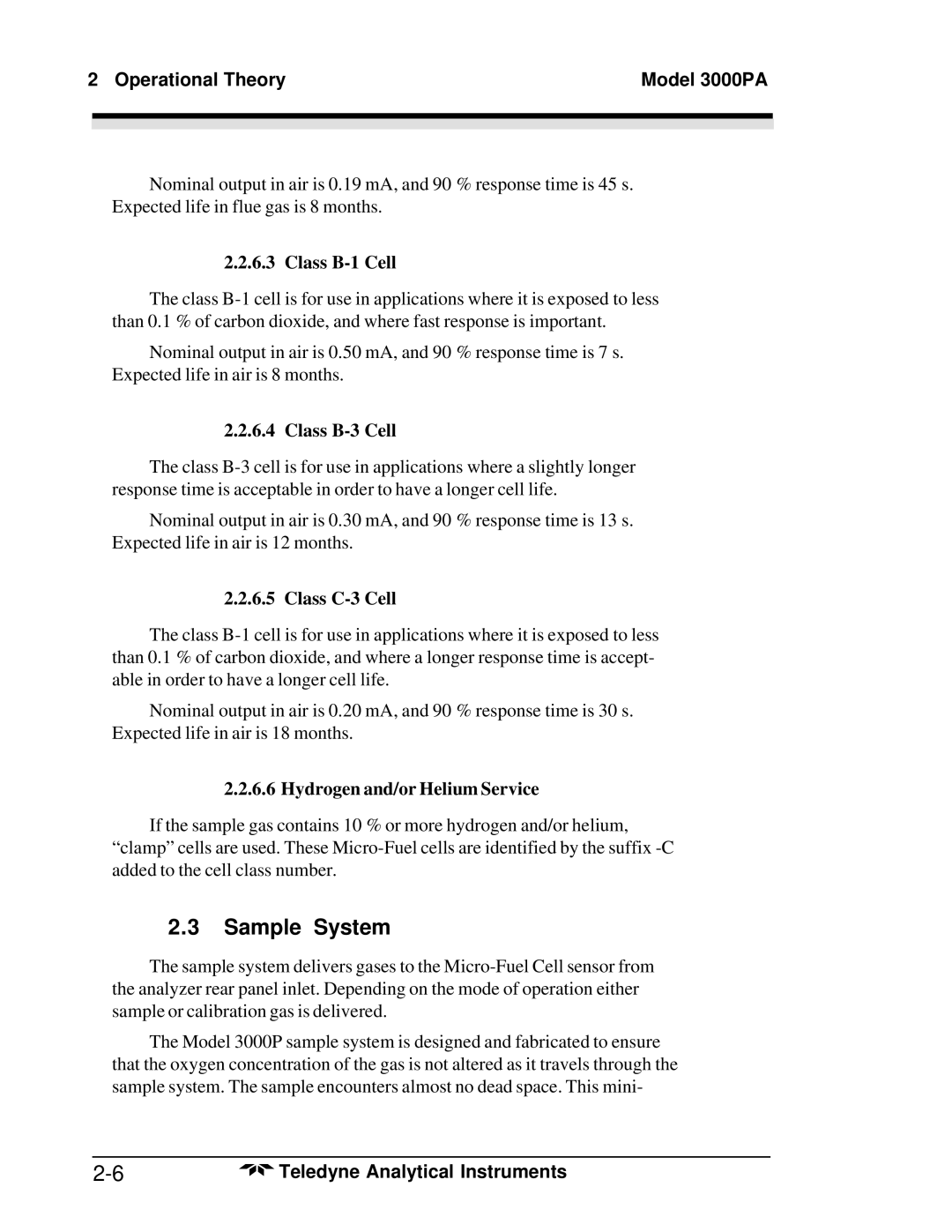2 Operational Theory | Model 3000PA | |
|
|
|
|
|
|
|
|
|
Nominal output in air is 0.19 mA, and 90 % response time is 45 s. Expected life in flue gas is 8 months.
2.2.6.3 Class B-1 Cell
The class
Nominal output in air is 0.50 mA, and 90 % response time is 7 s.
Expected life in air is 8 months.
2.2.6.4 Class B-3 Cell
The class
Nominal output in air is 0.30 mA, and 90 % response time is 13 s. Expected life in air is 12 months.
2.2.6.5 Class C-3 Cell
The class
Nominal output in air is 0.20 mA, and 90 % response time is 30 s. Expected life in air is 18 months.
2.2.6.6 Hydrogen and/or Helium Service
If the sample gas contains 10 % or more hydrogen and/or helium, “clamp” cells are used. These
2.3Sample System
The sample system delivers gases to the
The Model 3000P sample system is designed and fabricated to ensure that the oxygen concentration of the gas is not altered as it travels through the sample system. The sample encounters almost no dead space. This mini-
Teledyne Analytical Instruments |
